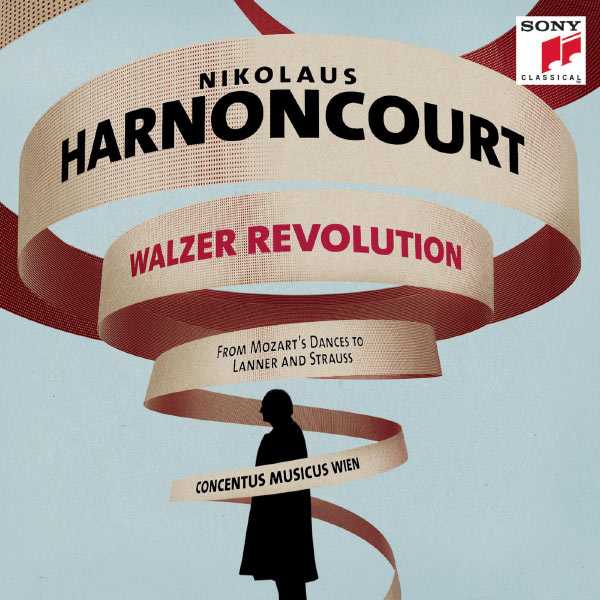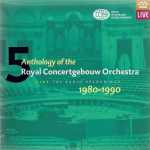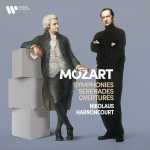
Composer: Joseph Franz Karl Lanner, Wolfgang Amadeus Mozart, Johann Strauss
Performer: Concentus Musicus Wien
Conductor: Nikolaus Harnoncourt
Number of Discs: 2
Format: FLAC (tracks)
Label: Sony
Catalogue: 88697914112
Release: 2012
Size: 487 MB
Recovery: +3%
Scan: yes
CD 01
01. Mozart: Kontretanz in D Major, K. 603, No. 1
02. Mozart: Kontretanz in C Major, K. 609, No. 1
03. Mozart: Kontretanz in C Major, K. 609, No. 4
Mozart: Sechs Deutsche Tänze, KV 571
04. Deutscher Tanz Nr. 1 in D Major
05. Deutscher Tanz Nr. 2 in A Major
06. Deutscher Tanz Nr. 3 in C Major
07. Deutscher Tanz Nr. 4 in G Major
08. Deutscher Tanz Nr. 5 in B-Flat Major
09. Deutscher Tanz Nr. 6 in D Major
10. Strauss: Radetzky-Marsch, Op. 228 (Urfassung)
11. Strauss: Erste Kettenbrücke-Walzer, Op. 4
12. Strauss: Schäfer-Quadrille, Op. 217
13. Strauss: Der Carneval in Paris, Galopp, Op. 100
14. Strauss: Walzer a la Paganini, Op. 11
CD 02
01. Lanner: Pas de neuf nach Saverio Mercadante, WoO
02. Lanner: Sehnsuchts-Mazur, Op. 89
03. Lanner: Hans Jörgel-Polka, Op. 194
04. Lanner: Malapou-Galopp, Op. 148a
05. Lanner: Hexentanzwalzer, Op. 203
06. Lanner: Marsch (from the ballet Corso Donati)
07. Lanner: Cerrito-Polka, Op. 189
08. Lanner: Jagd-Galopp, Op. 82
09. Lanner: Die Schönbrunner, Walzer, Op. 200
An album of lively waltzes and other dance music, consummately performed by Nikolaus Harnoncourt and Concentus Musicus Wien. With rarely-heard dance pieces by Mozart, Lanner, and Johann Strauss I.
On his new album, Walzer Revolution, Nikolaus Harnoncourt and the Concentus Musicus Wien turn their attention to a selection of dances by Wolfgang Amadeus Mozart, Josef Lanner and Johann Strauss the Elder himself, in order to give it a new interpretation in the spirit intended by the composers.
Harnoncourt, who more than any other conductor of our time represents a revolution in the way works are performed and in the reception of music, traces the line from the dances of Mozart to 19th-century dances that were profoundly characteristic of the society of that time.
Thanks to his typical practice of performing the works in a historical manner, he succeeds in making this dance music an authentic listening experience that is constantly denied to us by the usual modern orchestration. The purpose of the resulting album is not only to convey the true joy of listening but also to narrate music history.
Listening to an album by conductor Nikolaus Harnoncourt, even in his ninth decade, is a bit like attending a Richard Pryor show: you know you’re going to be outraged at some point, but you’re also going to get a radically new perspective on the subject matter. So it is with this Waltz Revolution, which the invigorated Sony Classical label deserves kudos for issuing. Hearing the album, you are in a world that’s just about as far as possible from New Year’s Eve Viennese waltz specials on television. The album begins with Mozart, who didn’t write waltzes, and the initial contradances are not even in triple meter. This is the weakest part of Harnoncourt’s argument here. It’s true that Mozart wrote a lot of dances during the last years of his life, seems to have enjoyed doing so, and was esteemed in this field by the people who commissioned him, but what’s not so clear is the implied line from Mozart to Joseph Lanner and Johann Strauss I. It seems unlikely that Mozart’s German dances and the like were being much performed in the 1820s. Harnoncourt seems to put Mozart first largely because their instrumentation, with winds and percussion, works well to set up the main attraction, namely the authentic-instrument performances of Strauss and Lanner with Concentus Musicus Wien. As usual with Harnoncourt, you may like or hate these, but the album is undeniably fresh, with lots of music that has rarely been heard outside Austria. Sample the familiar Radetzsky March, Op. 228, of Strauss I for an idea of what’s happening. First of all, this is not the version usually heard, which comes from a later arrangement; the work as Strauss wrote it is less brass and percussion heavy and generally a bit more transparent. Harnoncourt’s reading is characteristically astringent. Second, you’ll hear the sounds of Harnoncourt’s assorted period brasses and winds, which add color where a modern section strives for homogeneity. In general, they have a somewhat rougher sound than usual, but as compared with other Harnoncourt recordings there’s nothing too shocking about this one. It’s more like a pastry with the Schlag scraped off than an intentionally sour dish. The pieces by Lanner on the second CD are uniformly enjoyable, with such details as a shouted part for the musicians in the Malapou-Galopp (named for a locale in New Caledonia). Unreservedly recommended for Harnoncourt fans, and even for waltz lovers with plenty of antacid on hand.



